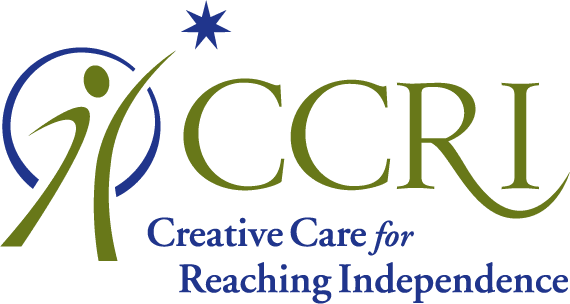Mental Health Awareness Month
By CCRI
Published on May 28, 2019
May is Mental Health Awareness Month. Part of the work we do is supporting people living with a mental health disability. Our hope is to continue to spread awareness, combat stigma, and initiate conversations about all things related to mental health.
Salome Hoff, LICSW and Linda Pagenkopf, LICSW are both Clinical Supervisor/Therapists in our Mental Health department. They have given us some educational information on areas of mental health and wellness that are a focus for individuals in our mental health program on a daily basis.
OCD (Obsessive Compulsive Disorder)
OCD (Obsessive Compulsive Disorder) is a psychiatric illness comprised of obsessive thoughts, urges, or images that are unwanted along with compulsions which are repetitive behavior or mental acts that the individual feels drive to perform in response to the obsession. The obsessions and compulsions are time consuming and unwanted.
A couple of examples are Aron who obsesses he will vomit while in school therefore, washes his hands (compulsion) over and over a several times per day to the point of dry cracks and bleeding. Or Rose who has to have the shampoo bottle in her shower slightly squeezed (compulsion) otherwise a woman in Africa will die (obsession). Or Sue who fears she hit a pedestrian while driving (obsession) so she spends 1 hour driving around her block (compulsion) to see if she had hit and injured someone.
Most with OCD are aware that these obsessions and compulsions are definitely or probably not true and feel out of control and shameful. The recommended treatment is often medications along with exposure therapy which involves repeated exposure to the obsession and withholding the ability to compulsively respond.
Tobacco Use
Tobacco use (specifically cigarettes) is the number one killer of people with mental illness. Tobacco use is not a “bad habit” but is an addiction many find near impossible to recover from. The research shows those addicted to cigarettes are the most likely to successfully quit via supportive therapy and nicotine replacement therapies (NRT)—nicotine patches, lozenges, inhalers, etc. These products are very safe; hence, being sold over the counter.
E-cigarettes/vaping is not considered a quit method and is considered just as life threatening as cigarettes.
Our culture doesn’t expect those addicted to alcohol or illicit drugs to quit on their own, same goes for cigarettes.
We are proud to be able to offer smoking cessasion therapy to the people we support.
Bipolar Disorder
Bipolar disorder is what we used to call manic depression. It is a mental health condition that causes extreme mood swings including emotional highs (mania) and lows (depression).
There are variations of bipolar disorder, but in general it has two main symptoms—mania and depression. Although bipolar disorder can occur at any age, typically it’s diagnosed in the teenage years or early 20s.
Symptoms can vary from person to person, and symptoms can vary or change over time. When someone becomes depressed, they may feel sad or hopeless and lose interest or pleasure in most activities. When their mood shifts to mania, they may feel full of energy or unusually irritable. These mood swings can affect a person’s sleep, their energy, behavior, activities, their judgment, and the ability to think clearly. Sometimes people with bipolar disorder, may enjoy the feelings of euphoria (mania) and believe they are more productive. However, this euphoria (mania) is always followed by an emotional crash that can leave you depressed, worn out, or leave the person in trouble financially, legally, or with relationship problems.
Despite the mood extremes, people with bipolar disorder often don’t recognize how much their emotional instability disrupts their lives and the lives of their loved ones so they don’t always get the treatment they need.
We don’t know exactly what causes bipolar disorder, and there is no known cure at this time. However, there are things we can do. We can pay attention to warning signs and talk to a doctor about any symptoms we notice early on. It is important to follow doctor’s instructions. This can prevent symptoms from getting worse. In most cases, bipolar disorder is treated with medications and counseling.
Suicide
Suicide is the act of intentionally causing one’s own death.
We can all help to prevent suicide. If someone you know is talking about wanting to die, is feeling hopeless, or say they have no reason to live, maybe they have extreme mood swings, are sleeping to much or not enough, it may be time to have a conversation. These are only some of the signs for depression and it could be that the person is thinking about suicide. They may feel like a burden to others, or you may notice the person spends more time alone than normal. Sometimes they show severe anger and are involved in very reckless behavior. They may increase the use of alcohol or drugs.
Talking about suicide with someone does not cause suicide. It is one of the best ways to help prevent someone from taking their own life. If this sounds like you or someone you know there is help close by. A phone call to National Suicide Prevention Lifeline, provides 24/7, free and confidential support. 1-800-273-8255. There is also a very simple assessment that you can find on Google called the “Columbia-Suicide Severity Rating Scale” (C-SSRS). It is designed to be a simple assessment that anyone can use.
Talking and following up with loved ones are just some of the things we can do to help others.


